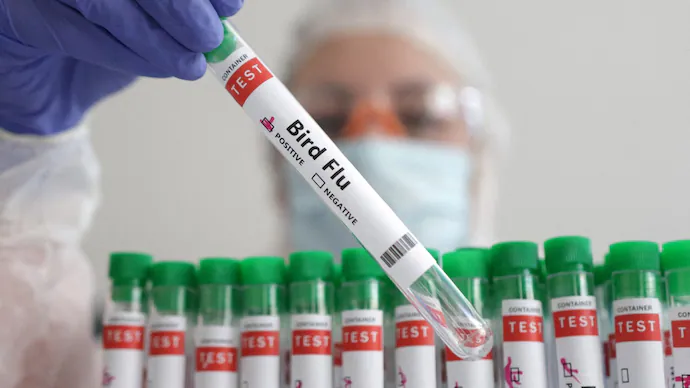A 59-year-old man in Mexico City has died from the H5N2 strain of bird flu, a subtype previously never identified in humans, the World Health Organization (WHO) announced on Wednesday.
The man, who had been bedridden due to unrelated health issues, developed a fever, shortness of breath, and diarrhea on April 17. He sought hospital care on April 24 and died the same day. He had underlying conditions including chronic kidney failure, diabetes, and high blood pressure. The WHO has not disclosed how he contracted the virus.
About H5N2:
H5N2 is a subtype of the avian influenza virus that predominantly affects birds, especially poultry. It is highly contagious among birds, leading to severe respiratory illnesses and high mortality rates in infected flocks. Human infections are rare and usually result from direct contact with infected birds or contaminated environments.
Preventative measures for controlling H5N2 include strict biosecurity practices on poultry farms, vaccination programs, and monitoring bird populations to prevent outbreaks. Ongoing surveillance and research are critical for managing the spread of H5N2 and mitigating its effects on both avian and human health.
Transmission of Bird Flu to Humans:
According to the WHO, influenza viruses typically circulate in animals but can infect humans, often through direct contact with infected animals or contaminated environments. Avian influenza viruses can cause a range of symptoms in humans, from mild upper respiratory infections to severe and potentially fatal illnesses. Symptoms can include fever, cough, sore throat, and severe respiratory issues, with additional symptoms such as conjunctivitis, gastrointestinal issues, encephalitis, and encephalopathy reported in some cases.
While human infections with bird flu are rare, they can be serious and even fatal. Strains like H5N1 and H7N9 have been particularly concerning due to their potential to cause significant outbreaks.
Further Information:
Humans can contract bird flu primarily through direct contact with infected birds, their droppings, or contaminated environments. This typically affects individuals who work with poultry or live in close proximity to infected birds. The WHO emphasizes the importance of monitoring and controlling the spread of bird flu to protect both avian and human populations.




